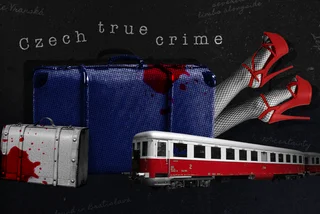Our new series takes a look at Czech history through the lens of some of the country's most infamous mysteries and criminal cases.
Anežka Hrůzová, a 19-year-old seamstress from a village just a few kilometers away, left her place of employment in Polná on March 29, 1899, as she usually did every day of the week.
But that time, she never came home. Her body was found – her garments torn and with a deep cut in her neck – in the nearby woods three days later, on April 1.
Far from an April Fools’ joke, the date nevertheless plays a crucial part in the tragedy to follow.
The wandering Jew
While briefly looking into other possible scenarios, including a family quarrel that might have spiraled into the poor Czech Catholic girl’s murder, local investigators quickly got sidetracked by circumstantial evidence mixed with rife societal anti-Semitic sentiment, then widespread across the Austro-Hungarian empire and Europe – the Dreyfus affair, an antisemitic political scandal, was unraveling at the same time in France.
Based on the small amount of blood at the scene where Hrůzová’s body was found and the fact that Passover that year coincided with Easter, all suspicions now turned to a group of Jewish vagrants often seen roaming the area, and now suspected of having killed her in a merciless and obscure act of “blood libel,” or the ritual sacrifice of a Christian.
Leopold Hilsner, a simple-minded Jew in his early 20s, was allegedly seen in the area when and where the murder was supposed to have taken place. Investigators jumped on the opportunity.
Based on nothing more than vague testimonies, circumstantial evidence, and his lack of solid alibi, Hilsner was arrested, imprisoned, and charged with being an accomplice to a murder that suggested a larger Jewish conspiracy. The young vagrant was also encouraged to name his alleged accomplices.
The highly publicized case, with the help of a bigoted public opinion already ill-disposed towards Jews, mixed with cynical media coverage, sparked an anti-Semitic hysteria that took the Czech lands by storm.
The Hilsner affair
Hilsner’s fate seemed doomed from the start.
“Disgusting people, people of another race, people who acted like animals, have murdered a virtuous Christian virgin so that they could use her blood… For what purpose this race, or sect, need this blood, this trial has not brought to light,” colorfully surmised Karel Baxa, the lawyer of the victim’s mother during the trial, held in Kutná Hora in mid-September.
Nor did the trial bring anything much to light, apart from the prejudices of the time and a sorry disregard for due process.
Convinced by scheming and hostile fellow inmates that his cooperation would help his case, the simple-minded Hilsner confessed to the charge and named two accomplices – both of whom were later found to have perfect alibis exonerating them.
Amidst the growing anti-Semitic frenzy and public hysteria, a few voices tried to talk reason. Among them was university professor Tomáš Garrigue Masaryk, who pointed to the many errors committed during the trial and called for justice to be carried out far from the passions of the mob.
A second trial was held in Písek this time, but once again in vain. To top it off, Hilsner was conveniently charged with another murder, that of young Marie Klímová who had disappeared in the summer of 1898 and whose body had now been found in the same forest as Hrůzová – although its advanced state of decomposition didn’t allow to establish how she had died.
Found guilty, Hilsner was sentenced to death in November 1900 in Písek. While his sentence was commuted to life imprisonment, all and any requests for a retrial submitted at the time were denied.
A long road to justice
After spending nearly two decades behind bars, Hilsner was pardoned by Emperor Franz Josef in March 1918, a few months before World War I would engulf the continent. Little is known about his later life. He died in 1928 in Vienna, aged 52.
But nearly a century after his death, the young Jew still has allies fighting for his cause. Among them, attorney Lubomír Müller, known for his work in rehabilitating wrongly persecuted people, who has been working for years to officially clear Hilsner’s name.
“The case is very symbolic and fundamental,” Charles Heller, the grandson of Hilsner’s guardian, told Czech Radio in a recent interview. “As long as it is written in the official records that he is guilty, someone will always be liable to believe it. There are still people in the world who spread all kinds of conspiracy theories about Jews."
Even though his innocence is now widely recognised, his conviction was never officially annulled. Czech Justice Minister Pavel Blažek himself recently denied a request for a retrial.
But that may be about to change.
Based on Müller’s work, as well as the extensive research accumulated by Czech journalist and true-crime expert Jaroslav Mareš about the case, the regional prosecutor’s office in Jihlava was, last September, ordered to re-examine the motion to possibly reopen legal proceedings.
This marks the first time in over 120 years that such a request is granted. According to Müller, Mareš’ research proved key to bringing about new archival materials showing the unreliability of the key witness and bring strong arguments in favor of the family quarrel angle.
The most plausible thesis, according to the researcher, is that Hrůzová was killed by her own brother, with whom she was in disagreement regarding the sale of their house – one of the very first scenarios quickly dismissed by investigators at the time.
The wheels of justice certainly do turn slowly, but may hopefully grind exceedingly fine.












 Reading time: 4 minutes
Reading time: 4 minutes 





























